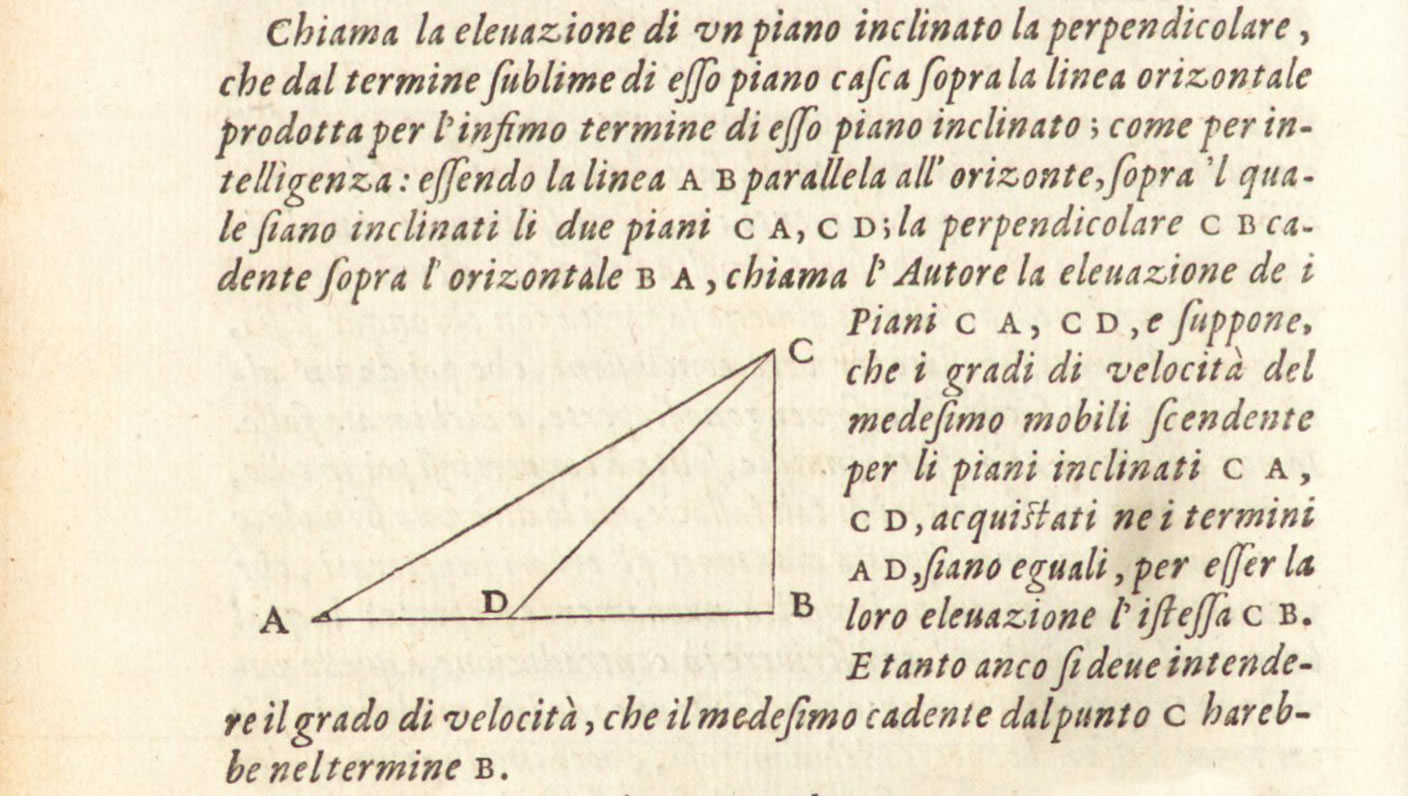The Dialogue and kinematics
The 'external page "Dialogue concerning the two chief world systems …" is first and foremost an outstanding work on astronomy and – in terms of the knowledge of the time – on astrophysics as well.
Discourses and mathematical demonstrations relating to two new sciences
At the end of the Fourth Day of the Dialogue (IV 61), Salviati announced the forthcoming publication of a new science of "our academician" [Galileo] to do with natural and unnatural motions. This was Galileo's work "Discorsi e dimostrazioni matematiche intorno a due nuove scienze" (Discourses and mathematical demonstrations relating to two new sciences), published in Leiden in 1638. Galileo devoted his last decade of research to this work in the area of mechanics. But, in the "Dialogue concerning the two chief world systems …", he had already published the most important results of his research, those concerning the inclined plane and falling bodies.
The law of the inclined plane

The falling times from the same height along two sloping planes are proportional to the lengths of these planes. The law of the inclined plane occurs again in the third theorem on accelerated motion and is contained in the Third Day of the discourses. "If one and the same body, starting from rest, falls along an inclined plane and also along a vertical, each having the same height, the times of descent will be to each other as the lengths of the inclined plane and the vertical" (Galilei, Galileo. Opere VIII 215–6).
The proof is set forth more precisely by Galileo on the Third Day of the discourses, this being in the explanations to Problem IX:
"Let us consider the triangle ABC, which, by lines drawn parallel to its base, represents for us a velocity increasing in proportion to the time; if these lines are infinite in number, just as the points in the line AC are infinite or as the number of instants in any interval of time is infinite, they will form the area of the triangle. Let us now suppose that the maximum velocity attained – that represented by the line BC – is to be continued, without acceleration and at constant value through another interval of time equal to the first."
(Galilei, Galileo. Opere VIII 243; Discorsi, ed. Carugo, Torino 1958, pp. 248–249)
Galileo's mechanics was based on a remarkable legacy from the sixteenth century that has now – unfairly – been forgotten.
Writers that are still spoken of here and there, like
- Alessandro Piccolomini
- Niccolò Tartaglia
- Giovan Battista Benedetti
- Francesco Maurolico
- Bernardino Baldi
- Guidubaldo dal Monte
Among the forgotten writers who influenced Galileo, are
- Michael Varro (1542–1586), with the work De motu tractatus edited in Geneva in 1584
- Francesco Buonamici (1533–1603), who was Galileo's professor in natural philosophy in Pisa. In 1591, in Florence, Buonamici likewise published a work called De motu tractatus.